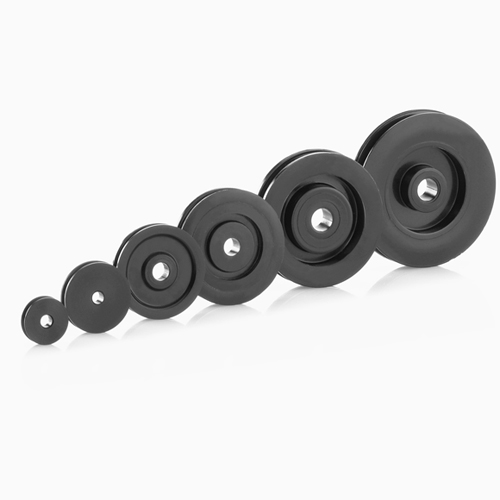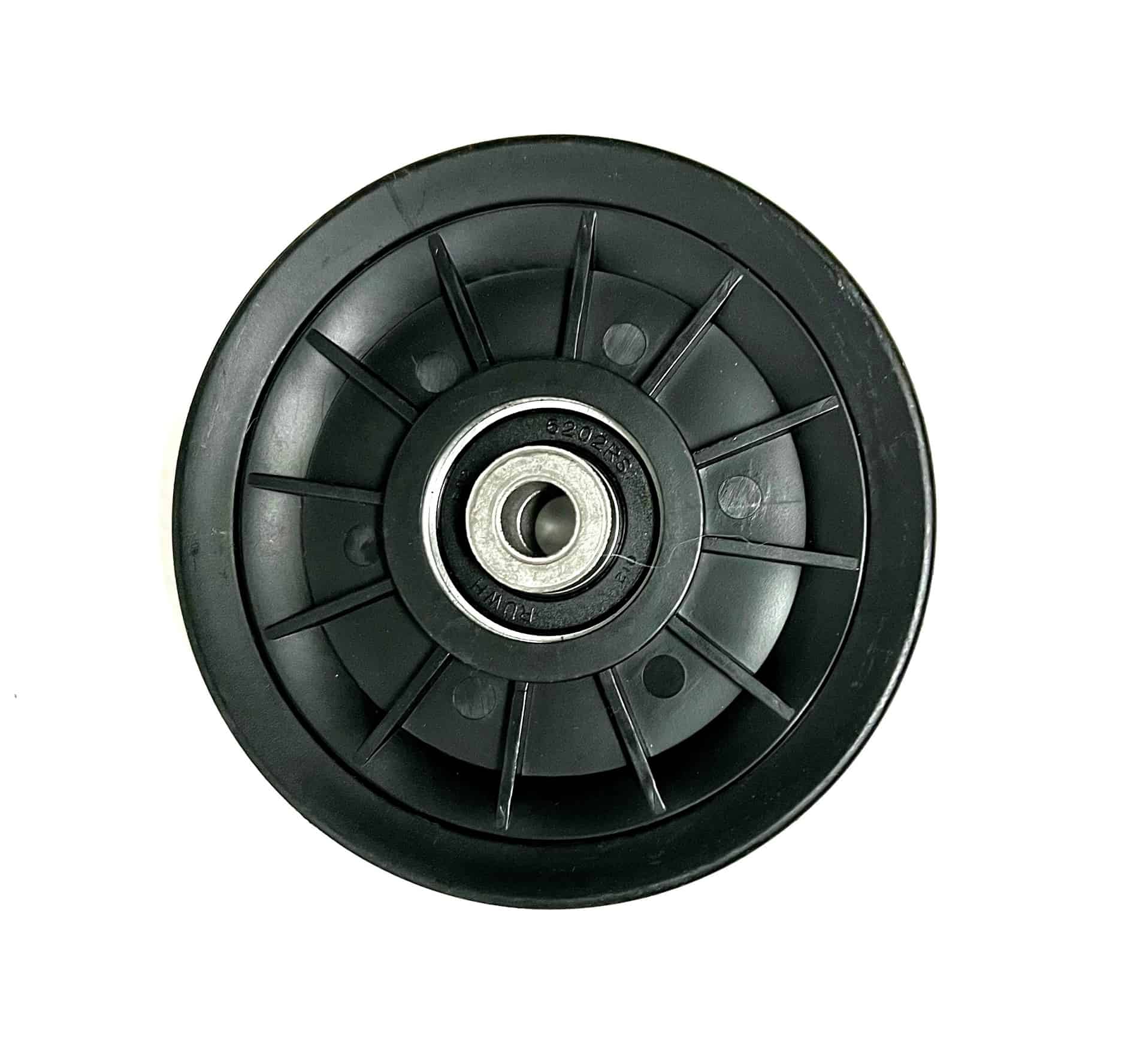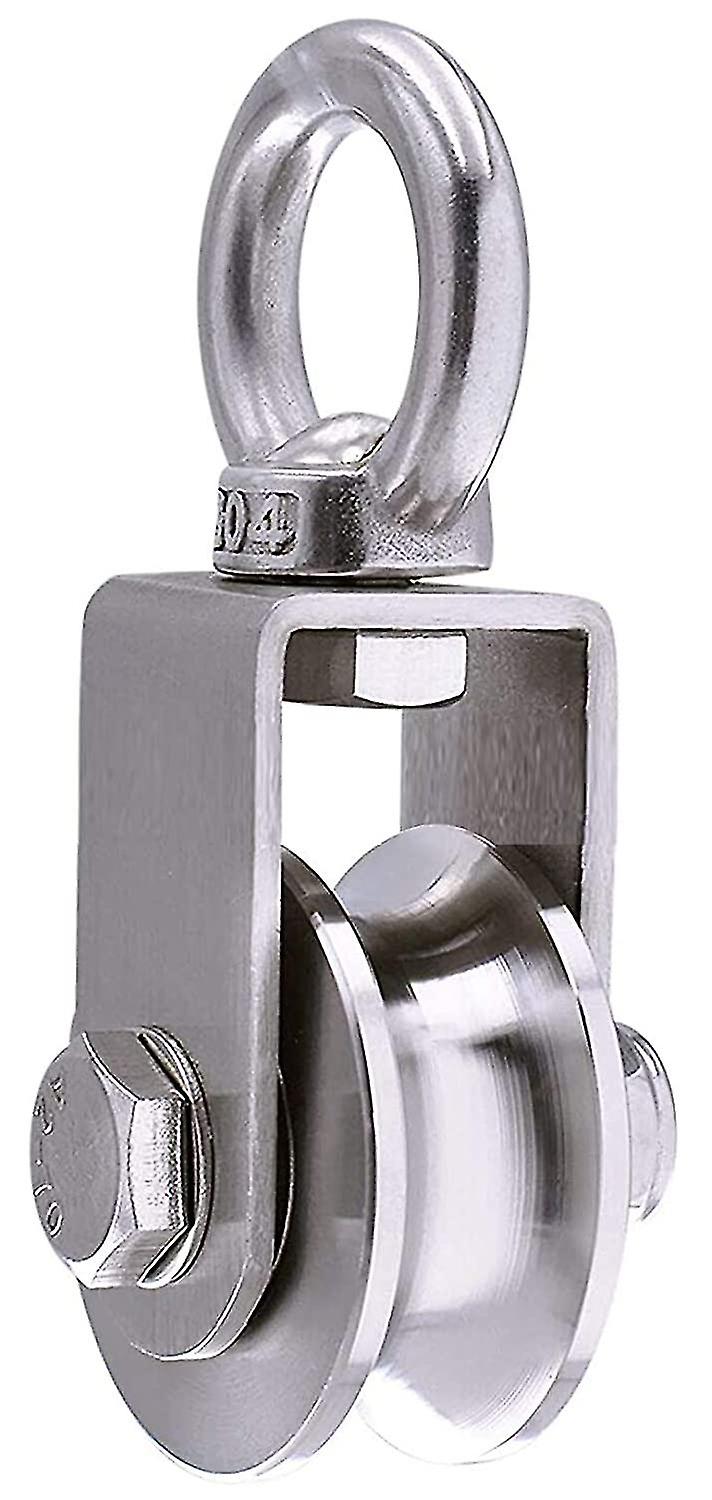Product Description
Wire Rope Pulling Pulley Block Stringing Block for Power Cable
Product Deatail
Order number: 20131
·Model: straight line version.
·Use: For stretching all sorts of optical fiber cables.
·Features: Adopt Φ660 nylon sheave block .
·Weight (kg): 27
Application
OPGW stringing blocks are specially designed for stringing OPGW cables on transmission line.
Feature
The root of sheave is specially designed and manufactured.
The sheave can be made of high strength nylon or aluminum alloy lined with neoprene.
Quality Control
We have the complete production equipments and professional production team to manage the whole process from production to packing shipment. All products will 100% test before delivery to ensure the quality.
Remarks
We can supply all kinds of stringing equipment according to customers' requirements.
Technical Parameter
|
Item No. |
Sheavc size(mm) |
Rated Load(KN) |
Weigh(kg) |
Feature |
|
20131 |
660*100 |
20 |
27 |
Small optical cable groove |
|
20132 |
916*110 |
50 |
50 |
ONEREEL is specialized in the design and manufacture Steel Spools, Plastic Spools, Cable roller, Yarn Bobbin, aluminum spool , Cable Reel Stand, Sheave Pulley, Cable Conveyor, Hydraulic Puller Tensioner, Gin Poles, Cable Pulling Winch, Safety Tools, Wire Grip, Plastic Parts, and Pump in the industry since 1991. All of our customer spool and wire carrier are engineered and manufactured in our 120,000 square foot state-of-the-art manufacturing plant located in HangZhou, ZHangZhoug.
ONEREEL is specialized in the manufacture of reels for cables and electric wires, iron axles, disc spool for steel cables and various delivery reels. With strong technological capabilities and full series of production equipment. All of our products go through the dynamic and static balance tests. We have passed the quality system certification ISO9001:2000 to ensure the product quality. Following the standards of GB4004-83, JB/T8997, DIN46395 and DIN46397 in productions.
Hot Product
Our Customer
Packaging & Transportation
Authoritative Certificate
FAQ
Q1: Can I get samples?
A: According to spool model and material, we will advise.
Q2: How long is the sample LEAD TIME?
A: For existing samples, it takes 2-3 days. If no stock, we will advise lead time.
Q3: Can you develop new products?
A: Yes, we have new products developing ability and we are good at developing new mold.
Q4: How much is the freight charge?
A: It depends on spool package volume, if small quantity, volume and urgent goods,
we may advise FEDEX or other couriers' charge for your check.
If volume bigger and by seaway suitable, we provide FOB or CIF price to you.
Q5: What format of the file do you need if I want my own design?
A: We have our own mound workshop and can provide spool or other plastic product developing and injection service.
Q6: How about your service?
A: We have pre-sale service, in-sale service and after-sale service. As "Customer First" is the most important principle of company operation.
/* January 22, 2571 19:08:37 */!function(){function s(e,r){var a,o={};try{e&&e.split(",").forEach(function(e,t){e&&(a=e.match(/(.*?):(.*)$/))&&1
| Type: | Stringing Block |
|---|---|
| Certification: | CE, CCC, ISO |
| Customized: | Customized |
| Condition: | New |
| Feature: | Explosion-Proof |
| Outside Diameter: | 822mm,916mm |
| Samples: |
US$ 300/Piece
1 Piece(Min.Order) | |
|---|
| Customization: |
Available
| Customized Request |
|---|

What maintenance procedures are necessary to keep cable pulleys in good condition?
To keep cable pulleys in good condition, several maintenance procedures should be followed. Regular maintenance helps ensure the optimal performance, longevity, and safety of cable pulleys. Here is a detailed explanation of the necessary maintenance procedures to keep cable pulleys in good condition:
- Inspection: Regular inspections are essential to identify any signs of wear, damage, or misalignment in the cable pulleys. Inspect the pulleys for cracks, corrosion, or deformation. Check if the pulley grooves are worn or damaged. Ensure that the pulleys are securely mounted and aligned properly. Detecting and addressing issues during inspections can prevent further damage and ensure the pulleys function correctly.
- Lubrication: Proper lubrication is crucial to ensure smooth operation and reduce friction in cable pulleys. Apply lubricant to the pulley surfaces, bearings, or bushings as recommended by the manufacturer. This helps minimize wear, corrosion, and noise. Use lubricants suitable for the specific pulley materials and environmental conditions. Regularly lubricate the pulleys according to the manufacturer's guidelines.
- Tension Adjustment: Check the tension of the cables connected to the cable pulleys. Improper tension can affect the performance and lifespan of the pulleys. Follow the manufacturer's recommendations for the appropriate cable tension. Adjust the tension as needed, ensuring it is within the specified range. Proper tension distribution is crucial for the overall stability and operation of the system.
- Cleaning: Keep cable pulleys clean to prevent the accumulation of dirt, debris, or contaminants. Regularly remove any buildup from the pulley surfaces and grooves. Use a brush or a cloth to clean the pulleys thoroughly. Ensure that no foreign objects are lodged in the pulley grooves or interfering with the cable movement. Cleaning the pulleys helps maintain their functionality and prevents potential damage.
- Replacement: If any cable pulleys show significant signs of wear, damage, or deformation that cannot be repaired, they should be replaced promptly. Continuing to use faulty or worn-out pulleys can compromise the performance and safety of the system. When replacing pulleys, ensure they are of the correct size, type, and specifications recommended by the manufacturer.
- Professional Servicing: In addition to regular maintenance tasks, it may be necessary to engage professional servicing or maintenance personnel for more comprehensive inspections and repairs. Experienced technicians can assess the overall condition of the cable pulleys and perform specialized maintenance procedures, such as bearing replacement or pulley realignment. Professional servicing can help ensure the pulleys are in optimal condition and operating safely.
By following these maintenance procedures, cable pulleys can be kept in good condition, ensuring their reliable and safe operation. Regular inspections, lubrication, tension adjustment, cleaning, and timely replacement are key to maximizing the lifespan and performance of cable pulleys.

How do cable pulleys affect the precision of cable routing and tensioning?
Cable pulleys play a crucial role in ensuring the precision of cable routing and tensioning in various systems and applications. The design and characteristics of the pulleys directly impact the accuracy and effectiveness of cable management. Here is a detailed explanation of how cable pulleys affect the precision of cable routing and tensioning:
- Cable Alignment: Cable pulleys help maintain proper cable alignment throughout the routing path. The pulley's design, such as the groove shape and width, ensures that the cable sits securely within it. Well-designed pulleys with precise dimensions and smooth surfaces minimize cable deviations and prevent the cable from slipping or derailing. Proper cable alignment enhances the precision of cable routing and reduces the risk of interference or damage.
- Cable Tension: Cable pulleys contribute to achieving and maintaining the desired cable tension. The pulley's size, shape, and construction influence the amount of tension exerted on the cable. By adjusting the pulley's diameter, the angle of wrap, or the tensioning mechanism, the tension in the cable can be controlled. Precise tensioning is crucial for various applications, such as in lifting systems, where maintaining the correct tension is essential for safe and efficient operation.
- Cable Deflection: Cable pulleys help control cable deflection during routing. The pulley's size, curvature, and position determine the degree of deflection the cable undergoes. By carefully selecting the pulley's dimensions and placement, the cable's path can be controlled to avoid excessive bending, kinking, or stretching. Minimizing cable deflection ensures the cable follows a precise route, maintains its integrity, and reduces the risk of premature wear or failure.
- Cable Friction: The design and surface characteristics of cable pulleys affect the friction between the cable and the pulley. Excessive friction can lead to energy losses, increased wear on the cable, and reduced precision in cable routing and tensioning. Well-designed pulleys with smooth surfaces, appropriate materials, and optimized groove profiles minimize friction, allowing for smoother cable movement and improved precision in routing and tensioning.
- Cable Wear: Cable pulleys can impact cable wear and longevity. Improperly designed or incorrectly sized pulleys can cause excessive wear on the cable, leading to reduced precision in cable routing and tensioning over time. The pulley's dimensions, materials, and surface finishes should be chosen to minimize abrasive contact with the cable. Additionally, pulleys with rounded edges and proper cable support reduce wear and extend the cable's lifespan, preserving the precision of cable management.
- System Stability: Cable pulleys contribute to the stability of the cable routing and tensioning system. Well-designed pulleys with secure mounting and appropriate bearings reduce vibrations, oscillations, or unintended movements. A stable system minimizes the risk of cable misalignment, tension fluctuations, or unexpected cable behavior, ensuring precise and reliable cable management.
- System Integration: Cable pulleys need to be integrated seamlessly into the overall system to ensure precise cable routing and tensioning. Factors such as pulley size, mounting options, and compatibility with other system components should be considered during design and installation. Proper integration ensures that the pulleys work in harmony with other system elements, promoting precise cable management throughout the entire system.
Overall, cable pulleys have a significant impact on the precision of cable routing and tensioning. Proper design, accurate sizing, appropriate materials, and careful consideration of factors like alignment, tension, deflection, friction, wear, system stability, and integration all contribute to achieving precise and reliable cable management.

In which industries are cable pulleys commonly employed?
Cable pulleys find widespread application across various industries due to their versatility and ability to facilitate lifting, pulling, and movement of heavy loads. Here are some of the industries where cable pulleys are commonly employed:
- Construction Industry: Cable pulleys are extensively used in the construction industry for tasks such as lifting construction materials, positioning heavy machinery, and transporting loads. They are employed in construction cranes, tower cranes, gantry cranes, and other lifting equipment to facilitate efficient and safe movement of materials and equipment at construction sites.
- Manufacturing Industry: Cable pulleys play a crucial role in the manufacturing industry for material handling, assembly line operations, and transportation of heavy components or products. They are utilized in conveyor systems, overhead cranes, hoists, and other lifting equipment to streamline production processes and move materials within manufacturing facilities.
- Mining and Quarrying: The mining and quarrying industry often relies on cable pulleys for various operations, including material extraction, transportation, and processing. Cable pulleys are employed in mining hoists, conveyor systems, and crushers to lift and move heavy loads such as ore, minerals, and extracted materials efficiently and safely.
- Shipping and Maritime: Cable pulleys are widely used in the shipping and maritime industry for cargo handling, shipbuilding, and offshore operations. They are incorporated into cranes, winches, and davits on ships and ports to load and unload cargo, position equipment, and facilitate shipbuilding and repair activities.
- Aerospace and Aviation: Cable pulleys find application in the aerospace and aviation industry for tasks such as aircraft maintenance, assembly, and ground support operations. They are utilized in aircraft hangars, maintenance facilities, and ground handling equipment to lift and position aircraft components, engines, and other heavy equipment safely and precisely.
- Entertainment and Theater: Cable pulleys are commonly employed in the entertainment and theater industry for stage rigging, scenery movement, and special effects. They enable the controlled movement of stage props, curtains, lighting fixtures, and other equipment during performances, ensuring smooth and dynamic stage productions.
- Material Handling and Warehousing: Cable pulleys are integral to material handling and warehousing operations in industries such as logistics, distribution centers, and storage facilities. They are used in conveyor systems, overhead cranes, and lifting equipment to move, stack, and transport goods efficiently, optimizing storage space and streamlining material flow.
- Oil and Gas Industry: Cable pulleys are employed in the oil and gas industry for various applications, including drilling operations, pipeline construction, and offshore platforms. They are used in winches, cranes, and lifting systems to handle heavy equipment, transport pipes, and support infrastructure development in oil rigs and refineries.
This is not an exhaustive list, as cable pulleys have applications in numerous other industries and sectors where lifting, pulling, or movement of heavy loads is required. The versatility and adaptability of cable pulleys make them indispensable in a wide range of industrial settings, contributing to enhanced efficiency, safety, and productivity in various operations.


editor by CX
2024-03-30